Storytime: Goodness
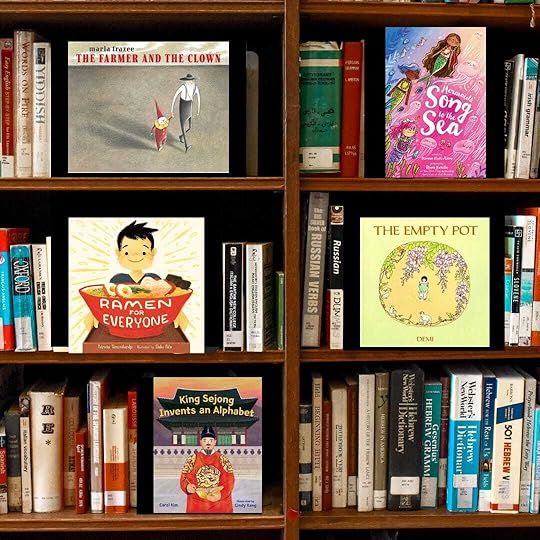
My grandmother used to say, “goodness, gracious, sakes alive!” when she got excited about something, but I never really thought about the words and what they meant. Webster’s defines goodness two ways. There’s “the quality of being morally good or virtuous” and “the beneficial or nourishing element of food.” Righteous. Delicious. It’s a fruit of the spirit, sweet as one of the Fredericksburg peaches being sold on the side of the road in Texas. This month I bring you sweet read aloud picture books that somehow represent goodness. It could be found in ramen, flower pots, the Korean alphabet, mermaid lullabies, farmers and clowns. Goodness, gracious, sakes alive, these stories are amazing!
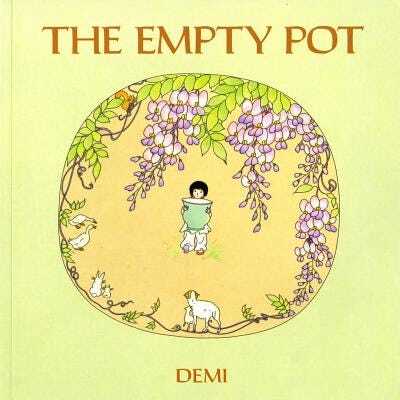
The Empty Pot by Demi
This story starts a long time ago in China, where a boy named Ping lived. He loved flowers, and anything he planted blossomed. Everyone in the kingdom loved flowers, even the Emperor, who tended his own garden. When it came time to choose a successor, the Emperor decided to “let the flowers choose” who it will be. All the children in the land are invited to the palace and given special flower seeds. Whoever can show the Emperor their best in a year’s time will inherit the throne.
Ping does everything right, good soil, good water, and he’s sure he’ll win, but nothing grows in his pot. He tries a new pot. Still nothing. The words grow scarce on the page and each illustration, framed in a circle, shows poor Ping and his empty blue pot. Soon the year has passed, and still nothing. When spring comes, all the children rush to show the Emperor their flowers, and Ping is ashamed, but his father tells him, “You did your best, and your best is good enough to present to the Emperor.” Such wisdom. So Ping goes to the palace, where the Emperor frowns at all the kids with beautiful flowers. Then we turn to this brilliant spread with a mostly empty circle on each page. Like we’re looking down into an empty empty.
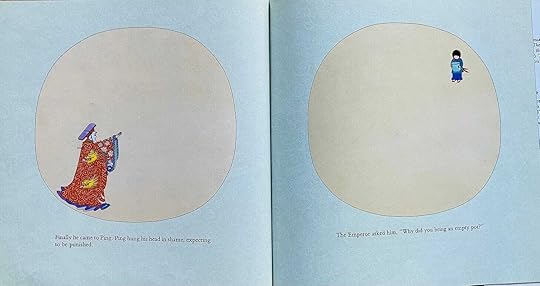
Ping cries as he explains how he tended the seed the best he could, and how an empty pot is the best he could do, but the Emperor smiles and says he’s found his successor. He reveals that the seeds had been cooked. They couldn’t grow! The kids lied about their flowers! Only Ping told the truth. I’ve read this book at dozens of story times, eyes are always glued to the page, and you can sense how kids identify with Ping. Everyone has experienced unfairness and it’s so . . . unfair! The Emperor says, “I admire Ping’s great courage to appear before me with the empty truth.” Ping rides off in a fancy chariot topped with beautiful flowers, justice is done. It’s so good to see truth win in the end.
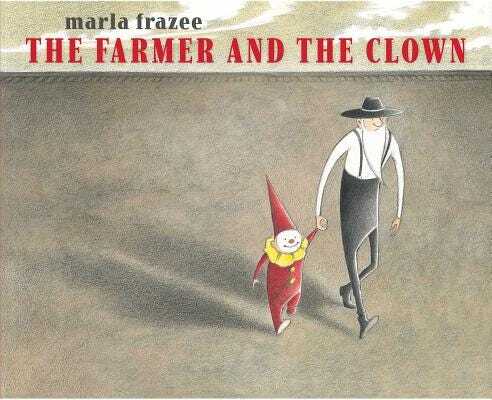
The Farmer and the Clown by Marla Frazee
Oh how I love Marla Frazee. She is brilliant at storytelling, evoking so much tenderness and emotion. This wordless story starts with a grumpy farmer in the fields, thrusting a pitchfork into some hay. A colorful train passes by, and he’s shocked to see someone fly off the back. The train doesn’t stop, so he goes to investigate and meets a smiling little clown who hugs his legs and takes his hand.
The farmer works to comfort the little clown and they work and play and picnic together, until finally a small smile creeps onto the farmer’s face. Then the train returns. The farmer and clown dash hand in hand across the field, the train stops, and the clown’s family surrounds him with love and hugs as the farmer watches, hands clasped behind his back. And then a lovely spread, where the tiny clown runs back to the farmer, who picks him up, hugs him tight, and kisses him on the top of his head.
The train drives off, everyone waving, and the farmer walks home alone, hands in pockets, looking a little sad. But there’s hope for a new friend as a monkey follows behind, furry finger to his lips, warning the reader not to spoil his surprise (see books two and three in this sweet series to see what happens next). This story is wistful and hopeful and full of the goodness that happens when you drop what you’re doing to tend to someone in need, and the power of connection.
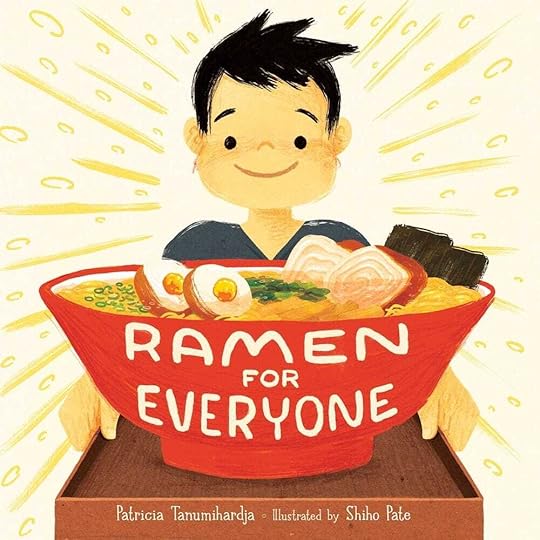
Ramen for Everyone by Patricia Tanumihardja, illustrated by Shiho Pate
I actually bought this book as an anniversary gift for my husband after a trip to Japan, where we had the most delicious ramen. It will make your mouth water as you read about the most perfect ramen made by Hiro’s dad (who grew up in Hawai’i). With a black cloth tied around his head he CHOPS, SIMMERS and SEASONS! The words and images feel like they’re lifted from the pages of a superhero comic, and to Hiro, his dad is a superhero. He watches, taking notes and responding to his dad’s quizzing questions. The secret to a rich, flavorful broth is patience. The noodles should be soft and springy like an earlobe. And there should be a choice of toppings, because “you can’t argue with taste!”
But when Hiro decides to try and make the perfect bowl of ramen for his family, the broth is bad and the noodles aren’t springy. “You got this!” encourages his dad (so good), but Hiro’s toppings are a fail, too. Hiro throws it all in the trash, but his dad sits cross-cross applesauce on the floor with his son and tells him he can still make special ramen. So Hiro comes up with a solution and serves each person in his family what they like. Just because it isn’t perfect doesn’t mean it isn’t good.
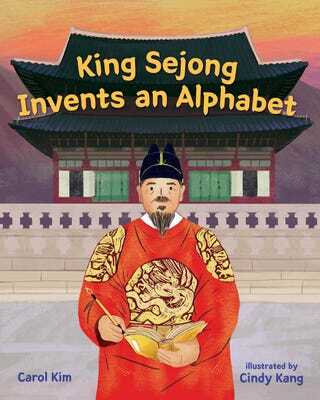
King Sejong Invents an Alphabet by Carol Kim, illustrated by Cindy Kang
This book tells such an important story. Imagine most of the people in your country are illiterate. Kids and their parents and their grandparents never learned to read or write because there is no alphabet, no simple path to literacy. Not good. That was Korea a long time ago, and those in power, liked it that way. Really not good. Knowledge is power, and they didn’t want to share it,
King Sejong, born in 1397 to a royal family, was taught to read and write Hanja, complex Chinese characters that were very difficult to learn. When he became king, he wanted to help the underprivileged, so he set out to invent an alphabet. He worked in secret for ten years so the rich and powerful wouldn’t stop him. Finally, he released his alphabet of twenty-eight letters, and called it Hangeul. Now anyone, even the most poor, could be literate. They could write to protest unfair laws, read about farming techniques, send letters to loved ones, and read stories. And that was so, so good.
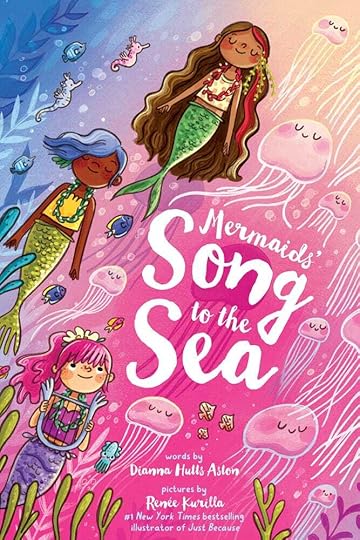
Mermaid’s Song to the Sea by Dianna Hutts Aston, illustrated by Renee Kurilla
This book is filled with bright illustrations and good (great) rhyme that we’ve come to expect from Dianna Hutts Aston (who happens to be a good friend of mine :-)). This line sets us up:
Three mermaids
with harps and leis
sing to the sea
at the end of the day.
They bless clams in their beds, lobsters in their pods, sharks in their shivers and squids in their squads. Don’t you just love it? Who wouldn’t want to travel undersea with three sweet mermaids, through blooms of jellies, finding hiders and peepers to bless. At the end, we see these three “mermaids” tucked into sleeping bags, sea things scattered all over the room. I can just picture the three girls bopping around before bedtime, finding new things to bless, and then drifting into dreamland under the sea.
The post Storytime: Goodness appeared first on Meredith Davis.



